Unique and one-of-a-kind structure, scale, and texture
From To Quyen Street, turn right, follow the canal of Cong Ha Quarter for less than 400m to reach the archaeological area that has been the focus of attention of experts and public opinion recently. Although located deep underground, within the excavation area of 300m2 , the two ancient boats located about 2m apart are still quite intact.
Deputy Director of the Department of Culture, Sports and Tourism of Bac Ninh province Nguyen Van Dap said: The ancient boat discovered consists of 2 boats of similar size, more than 16m long, about 2m wide, the deepest part is 2.15m, lying on the Dau River (today, this river no longer exists).
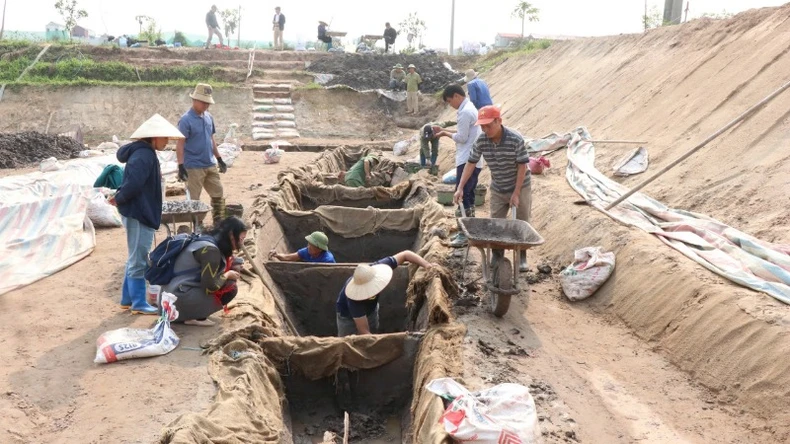 |
The ancient boat was excavated carefully and scientifically . |
From the results of emergency excavations at the scene, experts and scientists' opinions show that this is a type of catamaran, the remains discovered at the scene are the two remaining hulls completely submerged under water, functioning as two buoys supporting the entire structure above.
With its uniqueness and exclusivity as the boat was built entirely of wood, without using metal in its structural parts and connections, based on sources of documents about ancient boats in Vietnam and around the world , scientists have assessed that this is a boat relic with the largest scale, structure and most complex techniques, the only one discovered so far not only in Vietnam but also internationally.
Notably, the bottom of the boat has a dugout structure, with the widest diameter being 0.95m. The boat's body is connected from the bottom to the top edge of the boat's side by planks.
Overall, the entire two hulls of the boat were crafted using the same technique of carving a dugout tree trunk, joining the planks with mortise and tenon joints, and then the mortise and tenon joints were secured with wooden nails. “The most complex technique is shown in the head and stern of the boat, which is the connection between the dugout bottom and the planks, which are locked together and secured with four wooden pillars of similar size, 5cm x 5cm. This is the first time this technique has been seen in ancient boat building techniques in Vietnam and the world,” emphasized Mr. Nguyen Van Dap.
 |
The field workshop on boat excavation attracted the participation of many experts and scientists. |
Regarding the age, based on boat building techniques and domestic and international research documents, although there are no C14 dating results yet, opinions tend to affirm the presence of this type of boat in Vietnamese history, from the Ly to the Tran dynasties, specifically the Ly dynasty.
Dr. Pham Van Trieu, Deputy Head of the Department of Archaeology, Institute of Archaeology, Vietnam Academy of Social Sciences, Head of the excavation team, said: When approaching the site, the survey team was really surprised by the large scale of the two ancient boats. In particular, the solid connection by a long wooden bar at the head of the boat is very unique, discovered for the first time in Vietnam, making the boat even more interesting, attracting the attention of scientists and boat researchers nationwide.
In situ conservation linked to tourism development
How to urgently preserve and move towards long-term protection and promote the value of the unique and only ancient boat relic is an issue of particular concern to scientists and local people.
Mr. Nguyen Van Chien in Cong Ha quarter, Ha Man ward, Thuan Thanh town, the first person to discover the two ancient boats, shared: “As a lover of antiques, as soon as I discovered the two ancient boats at the bottom of the pond, I reported it to the ward and district cultural officers. My family is very supportive of the excavation work and in case the authorities decide to preserve the boats on site, my family also agrees.”
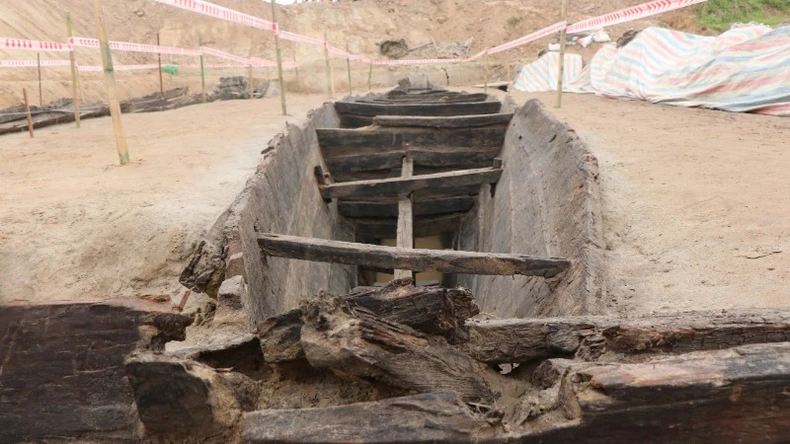 |
The most complex technique is shown in the bow and stern, which are the first to be discovered to date. |
Deputy Director of the Department of Culture, Sports and Tourism of Bac Ninh province Nguyen Van Dap said: Based on the current situation of the relic, the excavation site, and the proposal of the Institute of Archaeology, the Department of Culture, Sports and Tourism of Bac Ninh province proposed that the Provincial People's Committee allow the implementation of the plan to protect the original state of the ancient boat relic at the site. This is the most optimal solution to protect and promote the value of the relic because moving the original state of the relic is unavoidable in the condition that the scale of the relic is very large (about 100m2).
Accordingly, the provincial Department of Culture, Sports and Tourism presides over and coordinates with the Institute of Archaeology and relevant agencies and units to carry out emergency conservation of the relic according to the plan of temporarily filling sand to protect the original state of the relic after completing the research and documentation work on the site. This plan is implemented scientifically in 5 steps similar to those implemented for other archaeological heritages, most notably the World Heritage Site of Thang Long Imperial Citadel.
Notably, the province will apply advanced technology, using modern preservation methods to prevent the decomposition of wood materials, such as chemical treatment, humidity and temperature control, etc.
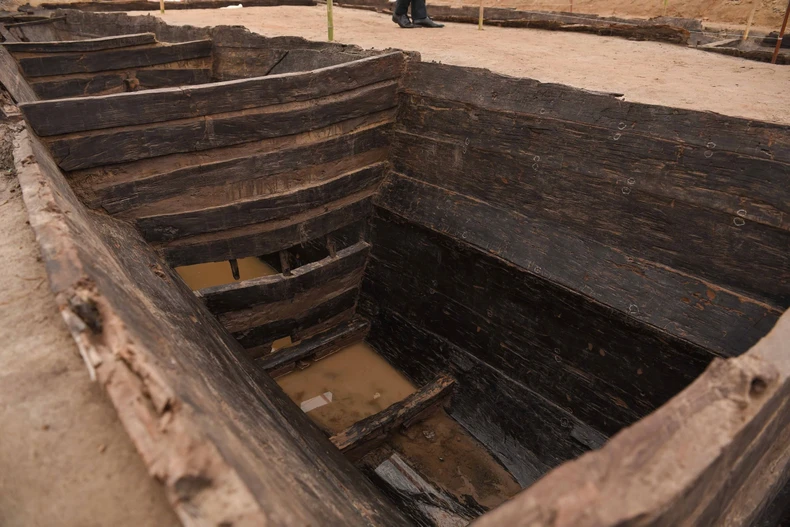 |
The boat is built entirely of wood, no metal is used in the structural parts and connections of the boat. |
According to the representative of the Department of Construction, the area where the ancient boat was discovered is the land area planned for the construction of parks and flower gardens. Therefore, if the land is kept in place, it will not affect the general planning space of the locality approved by the Provincial People's Committee. This is an advantage for the province to set up protective fences and signs about the relic area, prohibiting illegal construction and resource exploitation activities within the protected area.
In the long term, to promote the value of the relic, the Department of Culture, Sports and Tourism of Bac Ninh province said it will design a cultural tour combining ancient boat visits with other historical and cultural relics in the Luy Lau ancient citadel area, Thuan Thanh town.
Organize festivals, recreate ancient waterway trading activities, create souvenir products bearing the mark of the ancient boats of Cong Ha and Ha Man, display, introduce and interpret on-site the ancient boat relics using images and 3D technology, or can restore the original, reduce the scale of the relics to serve the display, creating an intuitive feeling for visitors.
Besides, Bac Ninh also encourages the participation of the community and local people in the work of preserving and promoting the value of relics.
Source: https://nhandan.vn/bac-ninh-de-xuat-bao-ton-tai-cho-thuyen-co-doc-dao-duy-nhat-post877130.html




![[Photo] General Secretary To Lam receives Chief of the Central Office of the Lao People's Revolutionary Party](https://vphoto.vietnam.vn/thumb/1200x675/vietnam/resource/IMAGE/2025/5/30/140435f4b39d4599a3d17975dfb444c5)
















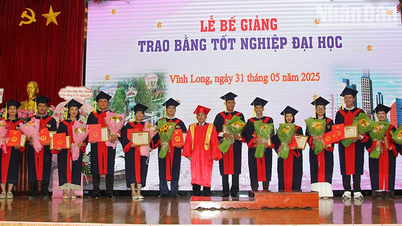



![[Video] Ho Chi Minh City: Number of COVID-19 cases increases rapidly, 2 deaths recorded](https://vphoto.vietnam.vn/thumb/402x226/vietnam/resource/IMAGE/2025/5/31/5fe289cf72774d918f23fe88bb1686ce)

![[Photo] National Conference "100 years of Vietnamese Revolutionary Press accompanying the glorious cause of the Party and the nation"](https://vphoto.vietnam.vn/thumb/1200x675/vietnam/resource/IMAGE/2025/5/30/1cf6cd5c8a934ebfa347028dcb08358c)








































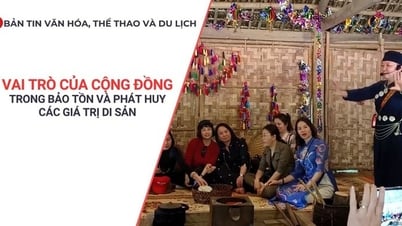











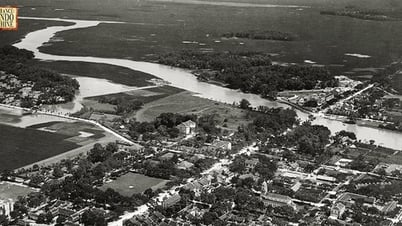














Comment (0)